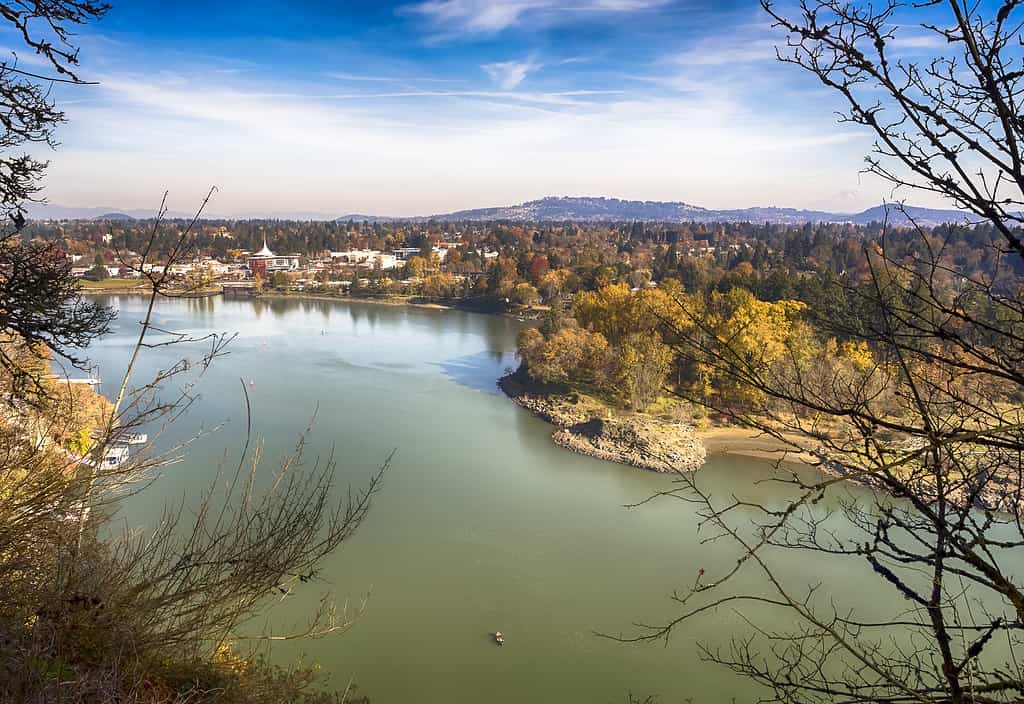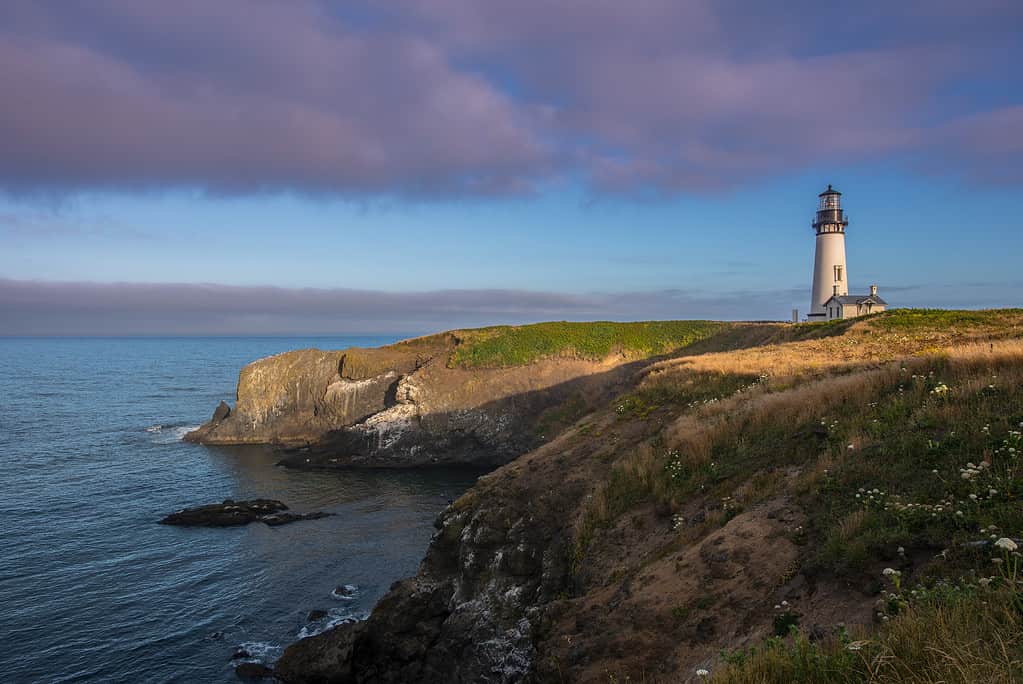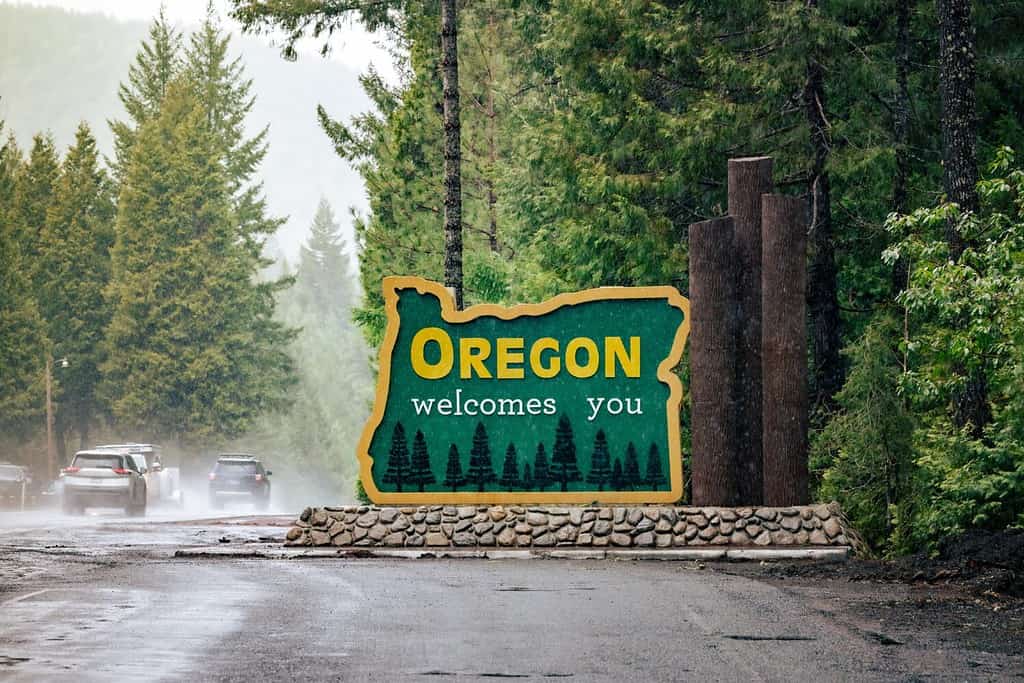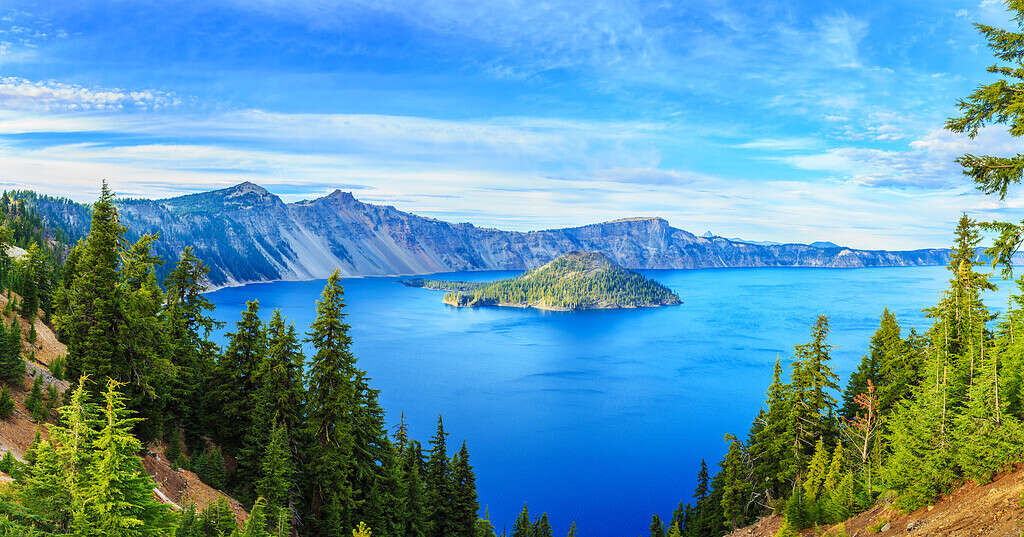Oregon is an expansive territory known for its diverse landscapes. It captivates residents and visitors with its natural beauty ranging from lush forests to arid deserts. But just how big is this state in the Pacific Northwest?
A Tapestry of History: Oregon’s Journey Through Time
Oregon’s history is a tapestry that is woven by indigenous tribes, explorers, pioneers, and other diverse communities that have shaped the state’s identity over centuries. Long before European settlers arrived, Oregon was home to various Native American tribes, including the Chinook, Nez Perce, and Kalapuya. They fostered intricate societies, rich traditions, and a deep connection to the land that continue to influence Oregon’s cultural fabric.
The 19th century marked a period of exploration and migration in the state’s history. The Lewis and Clark Expedition in the early 1800s ventured through the region and opened pathways for further exploration and trade. The Oregon Trail, which was a historic route used by pioneers seeking a better life in the West, also led to the establishment of settlements and towns. The Oregon Trail’s significance in the westward expansion of the United States makes the state pivotal in shaping the nation’s growth. As Oregon transitioned from a territory to statehood in 1859, it transformed into a culturally significant region for the rest of the country.

The view from above of Willamette River on a sunny autumn day in Milwaukie City, Oregon. Oregon has several lovely views like this, owing to its size.
©Strekoza2/ via Getty Images
Cultural Mosaic and Contemporary Significance
Oregon’s cultural significance is rooted in its status as a haven for diverse communities and a hub of creativity. The state’s vibrant arts scene, widespread values of environmental consciousness, and progressivism have garnered attention and admiration throughout the country. Cities like Portland have become magnets for artists, musicians, and innovators. They foster a dynamic cultural scene that also embraces individuality and creativity. Oregon’s dedication to environmental conservation is also a core aspect of its cultural identity. Due to this, the state has taken multiple initiatives to protect its stunning landscapes and promote sustainable practices.
The state’s cultural significance also lies in its commitment to inclusivity and social progress. Oregon has been a leader in promoting LGBTQ+ rights, passing legislation that reflects its values of equality and acceptance. The state’s celebration of its indigenous heritage has also led efforts to acknowledge historical injustices that demonstrate a commitment to reconciliation and understanding. Additionally, the state’s agricultural industry, including its renowned wine production, contributes to the state’s cultural and economic vitality.

Oregon has several culturally important sights such as morning light over Yaquina Head Lighthouse along the Oregon coast.
©kellyvandellen/ via Getty Images
The Size of Oregon in Different Measurements
To truly grasp the expanse of Oregon, understanding its size is essential. An acre is a unit of area often used to measure large plots of land, agricultural spaces, and natural reserves. Square miles and square kilometers are also common units of measurement to comprehend the extent of regions and territories. Below is a table that shows the size of Oregon in different measurements:
| Measurement | Acreage |
|---|---|
| Acres | 62,963,840 |
| Square Miles | 98,381 |
| Square Kilometres | 255,030 |
How Big Is Oregon Compared to Other States?
Oregon becomes even more intriguing when comparing its expanse to the vast landscapes of other states. By examining how many times bigger or smaller certain states are in comparison to Oregon, we can gain a deeper appreciation for its expanse within the context of the United States.

An Oregon welcomes you sign at the state line on US-HWY 199 Redwood Highway shows the breadth of the state.
©arboursabroad.com/Shutterstock.com
Alaska: A Land of Giants
Alaska, the largest state in the United States, dwarfs Oregon in terms of size. Alaska’s land area is approximately 665,400 square miles, making it a staggering seven times bigger than Oregon. The sheer vastness of Alaska’s wilderness, encompassing glaciers, mountains, and remote expanses, is a stark contrast to Oregon’s diverse yet comparatively smaller landscapes.
Texas: Embracing Grandeur
The Lone Star State of Texas is known for its sprawling landscapes and diverse culture. It therefore stands as the second-largest state in the U.S. Texas covers around 268,597 square miles, making it 2.7 times larger than Oregon. The immense size of Texas reflects its varied geography, ranging from arid deserts to lush plains, showcasing the breadth of experiences it offers.
Rhode Island: David Among Goliaths
Rhode Island, the smallest state in the U.S., highlights the relative size of Oregon even more vividly. With an area of about 1,545 square miles, Rhode Island is a mere 0.02 times the size of Oregon. The comparison underscores Oregon’s vastness, showcasing that the state could accommodate nearly 50 Rhode Islands within its borders.
Delaware: A Pocket of Space
Delaware, another one of the smaller states, offers an interesting comparison. With an area of around 2,489 square miles, Delaware is also 0.02 times the size of Oregon. Like Rhode Island, Delaware’s smallness emphasizes Oregon’s expansive territory because 49 Delawares can fit within Oregon’s borders.
California: The West Coast Giant
While California dwarfs Oregon in terms of population, its size also stands out in comparison. California covers approximately 163,696 square miles, making it 1.7 times bigger than Oregon. The juxtaposition between these West Coast neighbors also showcases California’s status as a giant among states.

A map showing Oregon’s location in the United States and its surrounding states.
©Mio Buono/Shutterstock.com
| Comparison | Area (Square Miles) | Area Rank Among U.S. States |
|---|---|---|
| Alaska (Largest) | 665,400 | 1 |
| Texas (Second Largest) | 268,597 | 2 |
| California (Third Largest) | 163,696 | 3 |
| Oregon (Ninth Largest) | 98,381 | 9 |
| Delaware (Second Smallest) | 2,489 | 49 |
| Rhode Island (Smallest) | 1,545 | 50 |
From this comparison, we can see that Oregon ranks 39th in terms of size among all U.S. states. While not one of the largest states, it still encompasses a significant area that offers diverse landscapes and ecosystems.
Putting Oregon’s Size into Perspective
Understanding the size of Oregon in various measurements and in comparison to other U.S. states is just the beginning. To truly appreciate its vastness, let’s consider some intriguing comparisons:
Oregon vs. United Kingdom
Oregon’s land area is roughly equivalent to that of the United Kingdom. This surprising comparison highlights the expansiveness of the state, as it encompasses about as much land as an entire European nation.
Oregon’s East-West Span
Oregon stretches approximately 400 miles from its western coastline to its eastern border. This vast span showcases the state’s diverse geography, especially because it ranges from the rugged Pacific coastline in the West to the high desert landscapes of the eastern region.
Oregon’s North-South Span
From its northern border with Washington to its southern border with California, Oregon spans around 300 miles. This vertical expanse reveals the state’s varied climates. These include temperate rainforests in the North through Mediterranean-like climes in the South.
Oregon’s Iconic Crater Lake
Crater Lake, a stunning natural wonder in Oregon, occupies a caldera created by a volcanic eruption. The lake’s depth and sheer size only exemplify the grandeur of the state’s geological formations.

Crater Lake is an ancient caldera lake located in the Cascade Mountains of southern Oregon. This serene view of Crater Lake in is a reminder of the power and beauty of nature.
©iStock.com/Photographer and videographer from Ukraine
Exploring Oregon’s Unforgettable Attractions
Oregon is a treasure trove of natural wonders and captivating landmarks that draw visitors from around the world. From its pristine coastlines to majestic mountain peaks, the state boasts an array of iconic attractions that showcase its diverse landscapes and rich cultural heritage.
Crater Lake National Park: A Sapphire Gem
Crater Lake National Park is one of Oregon’s most iconic and breathtaking natural attractions. The centerpiece of the park is Crater Lake, which is a stunningly blue and remarkably deep caldera lake that formed within the remains of a collapsed volcano. Visitors are also captivated by the lake’s intense hue and the surrounding cliffs that encircle it. Rim Drive around it offers panoramic views of the lake from various vantage points, which allows visitors to fully appreciate its awe-inspiring beauty. The park’s diverse landscapes, including old-growth forests and volcanic formations, also contribute to its status as a must-visit destination for nature enthusiasts and adventure seekers.
Columbia River Gorge: A Tapestry of Nature’s Grandeur
The Columbia River Gorge is a testament to the raw power of nature’s forces. Stretching along the border between Oregon and Washington, this national scenic area boasts towering cliffs, cascading waterfalls, and lush greenery. Multnomah Falls, the tallest waterfall in Oregon, is a crown jewel of this gorge, drawing in visitors with its picturesque setting. The Historic Columbia River Highway offers breathtaking viewpoints that reveal the gorge’s splendor, while hiking trails wind through forests and lead to hidden waterfalls. The Columbia River Gorge is, therefore, a haven for outdoor enthusiasts, photographers, and anyone seeking to immerse themselves in the grandeur of the natural world.
Cannon Beach and Haystack Rock: Coastal Marvels
Oregon’s coastline is dotted with many enchanting beaches. Cannon Beach stands out as one of the most beloved destinations of all. Framed by rugged cliffs, the sandy shore is graced by the presence of Haystack Rock, which is an iconic monolith that rises dramatically from the ocean. This marine sanctuary is also home to diverse bird species and tide pools teeming with marine life. This makes Cannon Beach a must-visit spot for beachgoers, photographers, and nature enthusiasts.

A view of Cannon Beach and Indian Beach in Ecola State Park, Oregon.
©Marisa Estivill/Shutterstock.com
Powell’s City of Books: Literary Haven
In the heart of Portland lies Powell’s City of Books. This iconic independent bookstore spans an entire city block and boasts shelves upon shelves of new and used books across various genres. Visitors can lose themselves in the labyrinthine aisles, with each corner revealing a new literary discovery. Powell’s is not just a bookstore; it’s a cultural institution that celebrates the written word and fosters a sense of community among book lovers. With its vibrant atmosphere and commitment to literature, Powell’s has earned its place as a cherished icon of Portland.
Mount Hood: Majestic Alpine Playground
Mount Hood is an imposing stratovolcano and Oregon’s highest peak. Therefore, it beckons adventurers year-round. In the winter, it transforms into a winter sports haven with ski resorts and snowboarding opportunities. During the warmer months, hiking trails lead to alpine meadows, serene lakes, and panoramic viewpoints. Timberline Lodge, a historic mountain lodge, offers both cozy accommodations and breathtaking vistas. The mountain’s prominence in Oregon’s landscape as well as its diverse recreational opportunities make Mount Hood a cornerstone of the state’s outdoor experiences.
The photo featured at the top of this post is © arboursabroad.com/Shutterstock.com
Thank you for reading! Have some feedback for us? Contact the AZ Animals editorial team.







